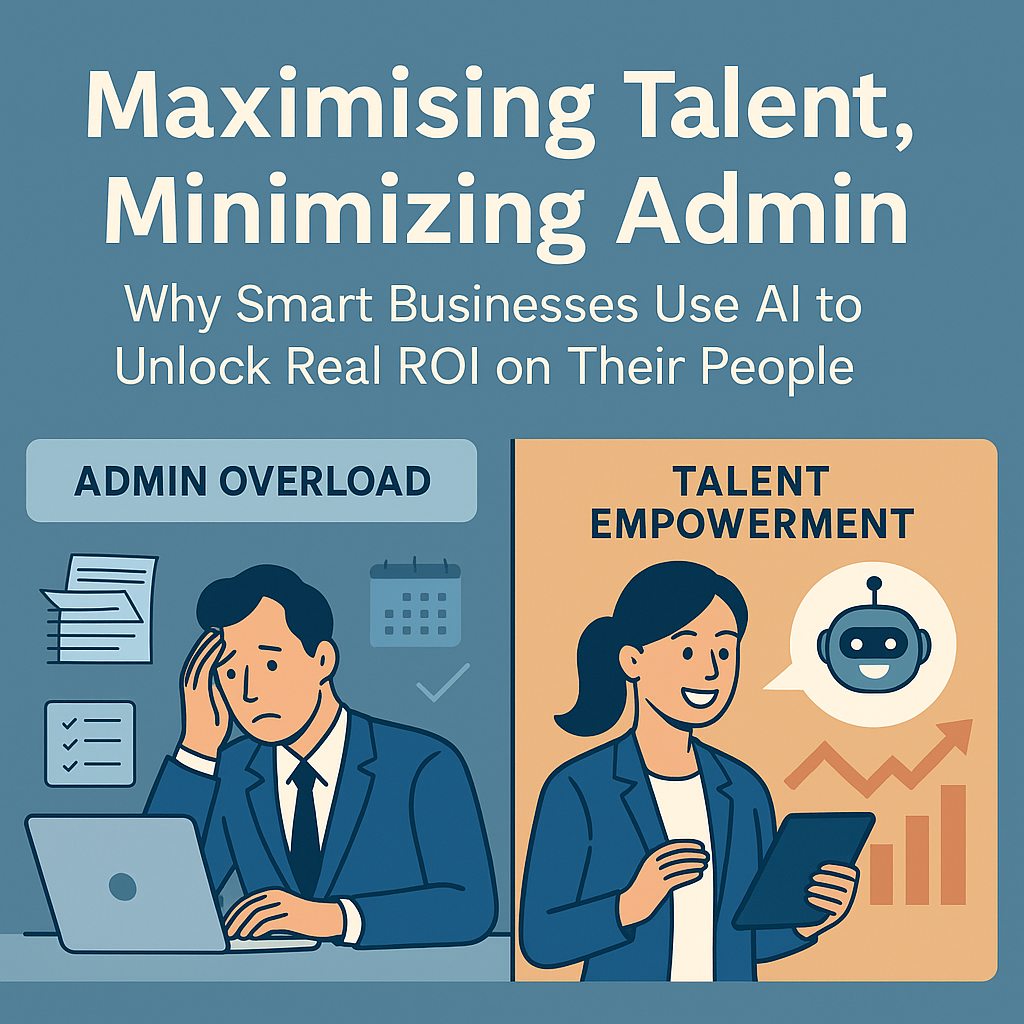Approx reading time: 7 mins 41 secs
This is the final part of our series on digital marketing tools. Check out the previous parts:
Introduction: Setting the Stage: Enhancing Marketing Efficiency with Smart Tools
Part 1: Revolutionising Marketing Automation – Smarter Strategies for Better Results
Part 2: The Art of Visual Storytelling – How Design Tools Shape Marketing
Part 3: Data-Driven Decisions – Analytics for Marketing Precision
Part 4: Personalising Audience Engagement – The Role of Email Marketing Tools
Synthesising Success: Integrating Tools for Optimal Marketing Efficiency
Introduction
Over the course of this series, we've journeyed through the vast landscape of digital marketing, uncovering the tools that make a real difference. From automating your marketing tasks to crafting compelling visual content, from making sense of data to personalising your emails and managing your social media efforts more effectively, we've covered a lot. At every turn, we've seen how AI is a practical ally in our marketing endeavours.
As we draw this series to a close, it's time to look at the bigger picture. It's about how you can integrate the tools in your arsenal to maximise your marketing efficiency. This final blog is dedicated to weaving together the threads of our discussion. We'll show you how bringing these tools together can streamline your processes, enhance your insights, and ultimately, amplify your marketing outcomes. Let's embark on this final leg of our journey together, discovering how to make your marketing toolkit greater than the sum of its parts.
The Integration Imperative
The strategic integration of your marketing tools isn’t just beneficial; it’s essential. When your tools work in isolation, you're not tapping into their full potential. But when they're integrated, they can transform your marketing operations into a well-oiled machine, where every part works in harmony. Let’s break down why integrating your marketing tools is crucial and what you stand to gain (or lose) in this process.
Why Integration Can’t Be Overlooked
- Cohesive Customer Experience: Your audience interacts with your brand across various platforms. Integrated tools ensure that your messaging is consistent, no matter where your audience encounters you, creating a seamless customer experience.
- Efficiency and Productivity: Switching between disjointed tools can eat up your time and lead to errors. When tools are integrated, data flows freely, automating tasks that would otherwise require manual effort and significantly reducing the chance of mistakes.
Challenges in Integration
- Complexity: With so many tools available, choosing the right ones to integrate can be daunting. The technical aspect of integrating different platforms, each with its own set of APIs, can also pose a challenge.
- Data Silos: Data trapped in one tool and not accessible by another can lead to incomplete insights. Overcoming these silos is a key challenge but also an opportunity to unlock a more comprehensive understanding of your marketing performance.
Opportunities Await
- Data-Driven Decisions: Integrated tools share data seamlessly, providing you with a holistic view of your marketing efforts. This can lead to more informed decisions, driven by a complete picture rather than fragmented snapshots.
- Automation and Personalisation: With tools that communicate with each other, you can automate personalised marketing campaigns at scale, reaching the right person with the right message at the right time, without manual intervention.
- Agility: Integrated tools give you the flexibility to adapt quickly. Whether it’s changing a campaign based on real-time data or testing different marketing strategies, integration allows you to pivot with ease.
Integration is about creating a marketing ecosystem where efficiency, insight, and customer satisfaction are at the forefront. Overcoming the challenges of integration may require time and effort, but the opportunities it opens up for your marketing operations make it a worthwhile endeavour. As we move forward, keep these challenges and opportunities in mind. They're stepping stones towards a more integrated, effective marketing strategy.
Tool Recap
Let's take a moment to recap the tools we've explored through this series. Each one offers unique capabilities to streamline, enhance, and refine your marketing strategies. We’ve divided them up by functionality, for easy reference.
Marketing Automation
- Hubspot: An all-in-one marketing, sales, and service platform. It shines by automating and optimising customer interactions, thus enhancing the overall efficiency of marketing campaigns.
- Zapier: Connects your apps and services, automating your workflows. This tool is crucial for streamlining task management and ensuring seamless data flow between different platforms.
- Braze: Specialises in boosting customer engagement through sophisticated automation and personalisation. It allows for highly targeted communication that significantly improve user engagement.
Design Tools
- Canva: Offers a user-friendly interface packed with a vast array of templates and design elements, making professional-quality design accessible to everyone.
- Visme: Provides a suite of tools for creating engaging presentations, infographics, and visual content that can captivate your audience and convey complex information in an understandable format.
- Veed: Simplifies video editing, allowing users to create professional-looking video content without the need for complex software, perfect for enhancing social media posts or marketing videos.
Analytics Tools
- Google Analytics: A staple in web analytics, offering detailed insights into user behaviour and website performance. It's indispensable for understanding how visitors interact with your site and optimising your online presence accordingly.
- Hotjar: Goes beyond traditional analytics by providing qualitative insights through heatmaps, session recordings, and surveys. This tool is invaluable for understanding the 'why' behind user actions on your site.
- Funnel: Automates the collection and reporting of data from over 500 sources, providing a comprehensive view of your marketing activities. It's essential for marketers looking to streamline their analytics and reporting processes.
Email Marketing Tools
- Mailchimp: Renowned for its email marketing capabilities, allowing for the creation of targeted campaigns complete with detailed analytics. It's an essential tool for personalising communication and tracking the success of your email marketing efforts.
- Outreach.io: Enhances sales engagement and productivity through streamlined email outreach. This tool is key for sales teams looking to automate their outreach processes and maintain a high level of personalisation.
- Hunter.io: Streamlines the process of finding and verifying email addresses, making it easier to connect with important contacts. It's a valuable tool for lead generation and networking efforts.
Social Media Management
- Hootsuite: Manages all aspects of social media marketing from one platform, including post-scheduling and performance analysis. It's critical for maintaining a consistent and effective presence across social networks.
- Sprout Social: Offers deep insights into social media engagement and analytics. With enhanced tools for listening and engagement, it's ideal for businesses looking to deepen their understanding of social media interactions.
- Loomly: Aids in the content creation process for social media, offering workflow tools and publishing options. It's beneficial for teams looking to streamline their social media content strategy and execution.
SEO Tools
- Moz: Provides a comprehensive set of SEO tools, including keyword research and site audits. It's designed to improve your site's visibility and ranking in search engine results.
- SEMRush: Offers a broad toolkit for enhancing online visibility and uncovering marketing insights. Its capabilities in competitive analysis and SEO strategy are particularly valuable.
- Ahrefs: Specialises in backlink analysis, SEO audits, and competitor research, making it a powerful tool for improving your search engine rankings and understanding your SEO landscape.
AI Marketing Tools
- ChatGPT: Leverages advanced natural language processing for customer service automation and content creation, enabling more efficient customer interactions and content strategies.
- Synthesia: Offers AI-driven video creation from text, streamlining the process of producing video content for marketing purposes.
- Midjourney: Assists in mapping and optimising the customer journey through AI, improving marketing strategies and customer engagement.
Best Practices for Tool Integration
Getting your marketing tools to work together smoothly can feel like a big task. But, with the right approach, you can set up a system where everything clicks. Here are some tips to help you integrate your tools effectively:
Understand API Connectivity
- Know Your APIs: APIs (Application Programming Interfaces) let your tools talk to each other. Check if your tools have APIs and how they work.
- Check Compatibility: Make sure the APIs of your chosen tools can connect without issues. If you’re not sure, ask the tool providers.
Choose a Central Platform
- Pick a Hub: Choose one tool as your main platform. This could be your CRM or marketing automation tool.
- Connect Others to It: Link other tools to this central platform. This way, you have a single source of truth for your data.
Train for Cross-Tool Proficiency
- Team Training: Make sure your team knows how to use each tool and how they connect. This might mean setting up training sessions.
- Create Guides: Write simple guides on how to use the integrated system. Include tips on troubleshooting common issues.
Keep It Simple
- Start Small: Begin with integrating a few key tools. You don’t have to connect everything at once.
- Evaluate and Adjust: See how these integrations work. Make changes as needed before adding more tools into the mix.
By following these, you’ll be well on your way to creating a marketing tool ecosystem that’s both powerful and efficient. Remember, the goal is to make your tools work for you, not the other way around. Keep it straightforward, and you’ll see the benefits in no time.
The Future of Integrated Marketing Tools
As we look ahead, the landscape of integrated marketing tools is set to evolve rapidly, influenced by technological advancements and shifting market trends. Here’s what we think the future holds:
AI and Machine Learning
- Smarter Integrations: Expect AI and machine learning to play even bigger roles. They'll predict which tools you need based on your goals, making the process more intuitive.
- Automated Personalisation: AI will enable even more sophisticated personalisation, adjusting marketing messages in real-time based on user behaviour and preferences.
Internet of Things (IoT)
- Wider Data Sources: The IoT will bring a surge of new data sources. Integrated tools will tap into this, offering richer insights into customer habits and preferences.
- Enhanced Customer Experiences: With IoT data, marketing tools can create unique customer experiences, like tailored offers triggered by real-world interactions.
Blockchain Technology
- Improved Data Security: Blockchain could revolutionise how we handle data security in marketing, making it easier to share data between tools without risking privacy.
- Transparent Customer Tracking: Blockchain might also offer new ways to track customer interactions across platforms transparently and ethically.
Voice and Visual Search
- Adapting to New Search Modes: As voice and visual searches become more common, integrated marketing tools will need to adapt, offering ways to optimise content for these formats.
- Unified Search Strategies: Future tools could help marketers manage and analyse their presence across traditional, voice, and visual search platforms from a single dashboard.
No-Code Movement
- Empowering Marketers: The rise of no-code platforms will make it easier for marketers to build custom integrations and workflows without IT help, speeding up the integration process.
- Greater Customisation: This trend will allow for more tailored marketing stacks, as marketers mix and match tools to meet their specific needs without being held back by technical constraints.
The future of integrated marketing tools is bright, with new technologies paving the way for more seamless, efficient, and personalised marketing operations. As marketers, staying curious and adaptable will be key to leveraging these advancements, ensuring that your marketing toolkit is not just up-to-date but ahead of the curve, ready to meet the challenges and opportunities of tomorrow.
Conclusion: The Path Forward
Let's go over what we've learned about making your marketing tools work better together:
- Harmonised Systems for Success:
- Viewing your marketing technology stack as a unified system is crucial for strategic success.
- Integration unlocks the full potential of each tool, enhancing data-driven insights, efficiency, and engagement.
- Continuous Assessment and Refinement:
- The digital landscape is constantly evolving; regular assessment and refinement of tool integration strategies are essential.
- Stay agile and responsive to changes in technology, platforms, and customer expectations.
- Strategic Integration:
- Experiment with new integrations and stay informed about emerging technologies.
- Make your tools work together to streamline marketing efforts and amplify their impact.
- The Future of Marketing Technology:
- The future lies in technologies like AI, machine learning, IoT, blockchain, and no-code platforms, promising smarter integrations and enhanced personalisation.
- Adapt to these technologies to keep your marketing operations ahead of the curve.
- Take Action:
- View your marketing tools as parts of a greater whole, not as isolated solutions.
- Embrace the potential of integrated tools for clearer insights, increased efficiency, and more strategic marketing decisions.
This marks the final piece in our series on digital marketing tools. We hope you’ve found these insights helpful and that they inspire you. It's been our goal to share knowledge and spark ideas that can make a real difference in your marketing efforts.
Thank you for joining us on this journey, and we hope you’ve enjoyed it as much as we have in bringing it to you!









